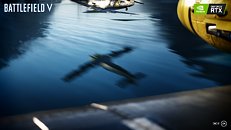Battlefield V System Requirements Outed: Ryzen 7 2700 or i7 8700 as Recommended CPUs
The official system requirements for the upcoming Battlefield V game have been outed, and there are three categories of such requirements now: Minimum, Recommended, and DXR. The minimum requirements are pretty steep as they are: DICE say at least an AMD FX-8350 or an i5 6600K CPU are required, alongside 8 GB of system RAM (on the graphics front, a GTX 1050 / RX 560 are mentioned).
The recommended system requirements do bring some interesting tables to the mix, though, with AMD's Ryzen 3 1300X and Intel's i7 4790 being hailed as good CPUs for the configuration. This is in stark contrast with the minimum requirements, but here's the gist: it appears that Battlefield V will be a well-paralellized game, though it will also require strong per-core performance (hence why the FX-8350 doesn't make the cut, and why a previous-gen i7 is higher on the list than the 6000 series i5 from Intel). Minimum RAM for the Recommended spec stands at a whopping 12 GB, though - I believe this is the highest I've ever seen for a game release. An RX 580 or a GTX 1060 round out the specs.
The recommended system requirements do bring some interesting tables to the mix, though, with AMD's Ryzen 3 1300X and Intel's i7 4790 being hailed as good CPUs for the configuration. This is in stark contrast with the minimum requirements, but here's the gist: it appears that Battlefield V will be a well-paralellized game, though it will also require strong per-core performance (hence why the FX-8350 doesn't make the cut, and why a previous-gen i7 is higher on the list than the 6000 series i5 from Intel). Minimum RAM for the Recommended spec stands at a whopping 12 GB, though - I believe this is the highest I've ever seen for a game release. An RX 580 or a GTX 1060 round out the specs.












